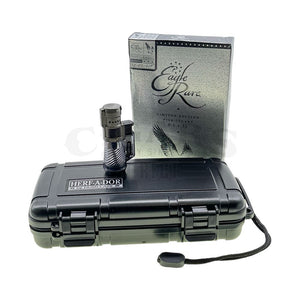Parts of a Tobacco Plant
Share
Knowing about the different parts of a tobacco plant might seem to be in the category of “more than you need to know,” but if you really want to fully appreciate the cigar smoking experience and become a true connoisseur of cigars, it’s knowledge you want to have. And especially so if you’re in a situation where you hear terms like “ligero,” “seco,” and “volado” being batted about, and you’re with people who assume you know what they mean, and how a ligero leaf differs from a seco leaf, and how they both differ from a volado leaf, and so on.
Growers divide tobacco plants into three basic parts for description and classification purposes. Starting at the bottom, you have the volado, or the lower leaves. In the middle are the seco leaves, and at the top are the ligero, or crown leaves.
Because leaves at different levels of the plant differ in age and in the amount of sun they receive, they also differ in size, flavor, and strength. Volado leaves, since they’re at the bottom and receive less sun than the others, are the narrowest but not necessarily the smallest. They are light in body and they burn easily.
Seco leaves, from the middle of the tobacco plant, are the largest of the three. They’re also in the middle of the strength and taste ladder, which makes them an important filler component.
Ligero leaves, since they’re at the top of the plant and they’re the youngest, are the smallest of the three types of leaves. But, since they receive the most amount of direct sunlight, they’re the strongest and they contain the most nicotine. These leaves require more aging than seco leaves do—the longer time is essential for settling these leaves down before they’re rolled into cigars.
All three types of leaves are important components in cigars, as each lends its unique qualities to the finished smoke. But, of the three, liga and seco are the leaves you’ll encounter most often in descriptions and discussions, as they’re the ones that give cigars most of their flavor and strength characteristics. Volado is important, too, but more for its burning qualities; it’s the leaf that keeps the others going. This is when knowing more about the various leaves and their qualities pays off. If you see a cigar designated as a “liga” or described as being heavy in ligero, you know to expect a stronger smoke than one that’s more on the seco side.














